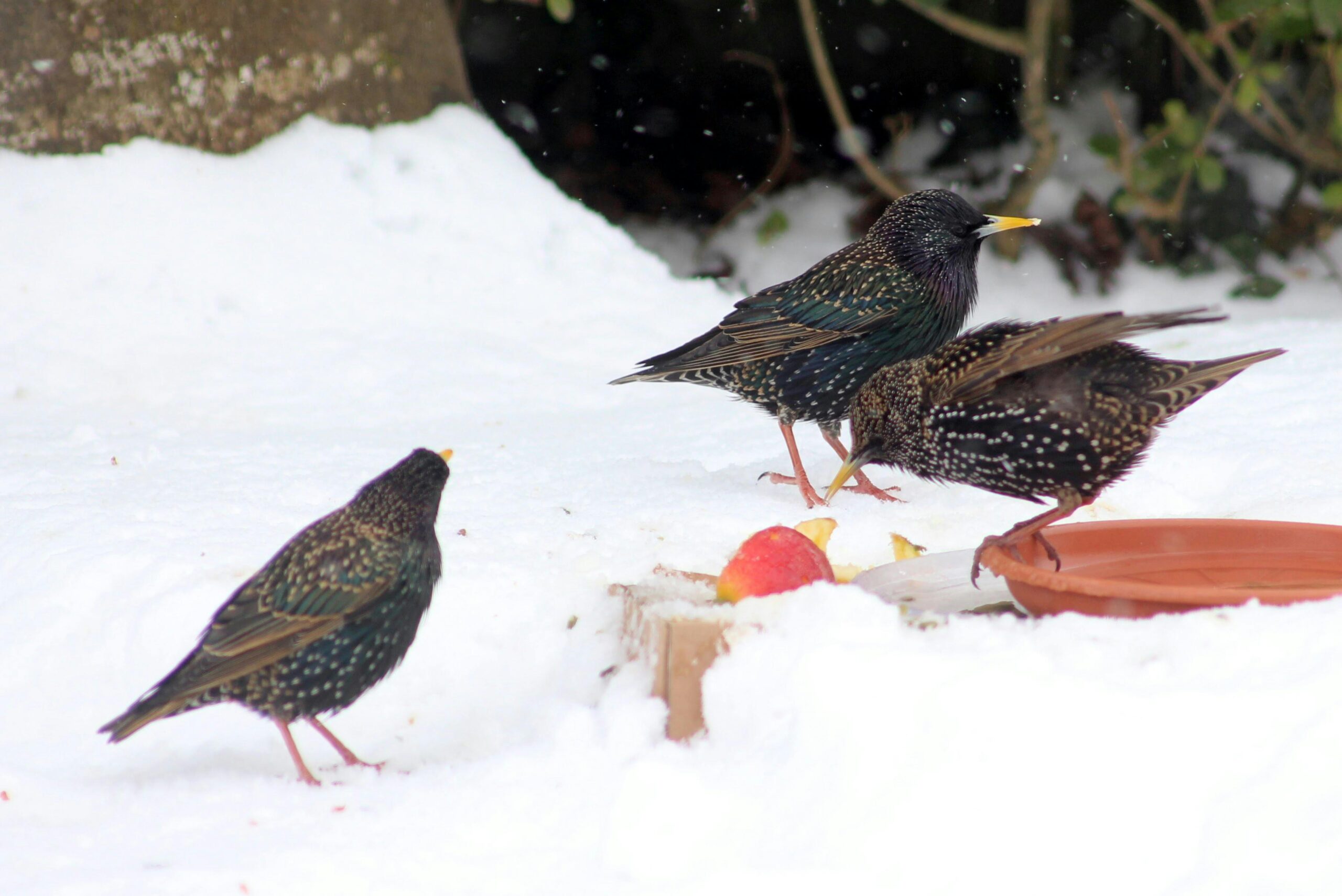During the cold months in the UK, freezing temperatures can turn a bird bath into a block of ice overnight, cutting off a vital water source for garden birds. Maintaining a supply of fresh, unfrozen water is essential for helping birds survive the winter, especially when natural water sources are frozen over. While it may seem like a minor detail, keeping a bird bath ice-free can make a significant difference in the health and survival of local bird populations.
This article explores practical, safe, and effective methods to prevent bird bath water from freezing during the UK winter. From selecting the right bird bath material to applying simple household tricks and eco-friendly solutions, readers will find actionable advice that balances wildlife care with environmental responsibility. Whether you’re a dedicated birdwatcher or a casual garden enthusiast, these insights will help you keep your feathered visitors hydrated all winter long.
Understanding Why Bird Bath Water Freezes
Freezing temperatures during the UK winter are caused by a combination of low ambient temperatures, clear skies, and calm conditions that allow heat to radiate away from surfaces like bird baths. As the water loses heat, its temperature drops, and once it reaches 0°C, it begins to freeze. Shallow bird baths, which are often made from materials like ceramic or metal, are particularly prone to freezing because they lack insulation and retain cold quickly.
This natural freezing process not only prevents birds from accessing water but can also cause long-term damage to the bird bath itself. Cracking, surface erosion, and structural weakening are common in baths that freeze and thaw repeatedly. Understanding this phenomenon is crucial for implementing the right preventive measures. It’s not just about keeping the water liquid; it’s about ensuring birds have consistent, safe access to hydration throughout the colder months.
The science behind water freezing during UK winters
The UK’s maritime climate means that winters are usually mild compared to continental Europe, but cold snaps can still bring overnight frosts and daytime freezing temperatures. During these periods, radiative cooling—where surfaces lose heat to the night sky—can cause even above-freezing air temperatures to result in frozen bird bath water.
Additionally, the still air and high humidity often found during winter nights create ideal conditions for ice to form. Because bird baths are exposed and usually placed in open garden areas, they’re more vulnerable to these conditions. Knowing how and why freezing occurs allows garden owners to make informed decisions about bird bath placement, materials, and maintenance.
Choosing the Right Bird Bath for Cold Weather
The material and design of a bird bath play a crucial role in how well it can withstand winter conditions. Not all bird baths are made equally — some are far more resilient to freezing temperatures than others. Concrete and ceramic bird baths, although aesthetically pleasing, tend to absorb moisture and can crack when the water inside them freezes. In contrast, bird baths made from resin, plastic, or metal are often more suitable for cold climates due to their durability and resistance to frost damage.
In addition to materials, the shape and depth of the bird bath also matter. Shallow baths freeze more quickly, while deeper ones retain warmth slightly longer. Bird baths with a dark-colored surface can absorb more heat from sunlight, even on cold days, and slow down the freezing process. Elevated baths with stable bases also stay cleaner and are less likely to be affected by ground frost.
Best materials and designs to withstand frost
When selecting a bird bath for the winter months, look for one made from frost-resistant plastic or polyresin, which can expand and contract with temperature changes without cracking. Some modern designs incorporate insulating double walls or even offer compatibility with heating elements. Lightweight materials are also easier to relocate, allowing users to move the bath into sheltered areas when necessary.
Features like non-slip surfaces, gradual sloping sides, and removable basins can further enhance usability and safety for birds. Avoid decorative features that collect standing water or provide crevices where ice can build up. Ultimately, the right bird bath design should combine functionality, durability, and ease of maintenance to ensure consistent access to clean water for birds during freezing conditions.
Effective Methods to Keep Bird Bath Water Ice-Free
There are several practical methods to prevent bird bath water from freezing, and most of them require little to no electricity. One of the simplest approaches is to place a ping pong ball or small floating object on the surface of the water. As the ball moves with the wind, it helps prevent the water from becoming completely still, making it harder to freeze.
Another effective method is to move the bird bath to a sheltered, sunny location. Even limited winter sunlight can provide enough warmth to slow down freezing. Surrounding the base of the bird bath with insulating materials like straw, bubble wrap, or old towels can also reduce heat loss from the container. Additionally, regularly pouring warm (not hot) water into the bath in the morning and late afternoon can help keep the water usable for longer.
Practical tools and tricks for winter bird care
To maintain an ice-free bird bath during a UK winter, many gardeners find success using homemade insulation. Wrapping the bowl or pedestal in old clothing, foam pipe insulation, or thick hessian sacks can retain ambient heat. Placing the bath on a rubber mat or wooden board helps keep it off frozen ground, reducing exposure to cold surfaces.
Another low-tech solution is to use dark-colored trays or bowls, which naturally absorb more solar radiation. These can be rotated daily to replace frozen ones. Some enthusiasts also use solar-powered aerators or small water pumps, which promote movement in the water and reduce ice formation.
Importantly, never add salt, glycerine, or antifreeze, as these substances are toxic to birds. Every method chosen should prioritize bird safety while being mindful of energy usage and environmental impact.
Using Safe Heating Solutions
For bird enthusiasts seeking a more consistent solution, heated bird baths offer a reliable way to keep water ice-free throughout winter. These devices are specifically designed to operate at low voltages and maintain water just above freezing. Many models are thermostatically controlled, activating only when the temperature drops to a certain point, which helps conserve energy.
If a heated bird bath is not feasible, bird bath de-icers present an affordable alternative. These small, submersible devices can be added to existing bird baths and are typically powered by mains electricity. It’s crucial to select models that are outdoor-rated, low-wattage, and safety-certified for wildlife use. When used responsibly, these tools provide a stable water source without posing risks to birds.
Pros and cons of heated bird baths and de-icers
Pros:
- Consistent access to unfrozen water for birds.
- Convenience, especially during prolonged cold spells.
- Automatic temperature regulation with some models.
- Minimal daily maintenance required.
Cons:
- Cost of purchase and running electricity, though modern versions are energy-efficient.
- Dependence on power supply, which may not suit remote areas.
- Need for weatherproof extension leads and safe positioning to avoid water-electrical hazards.
While heated options can be extremely effective, users must ensure cords and units are properly shielded from moisture and checked regularly for wear. These heating solutions, when installed correctly, can significantly enhance a bird-friendly garden in winter without sacrificing safety or sustainability.
Natural Alternatives to Prevent Freezing
Not everyone prefers or has access to electric solutions, and for those seeking a more environmentally conscious approach, natural methods can be surprisingly effective. These techniques rely on strategic placement, passive insulation, and daily manual care to minimize the formation of ice without harming birds or the environment.
One simple strategy is to relocate the bird bath near a wall or fence that absorbs sunlight during the day. Structures like brick or stone retain heat and can keep surrounding air temperatures slightly higher. Additionally, placing the bird bath under a tree canopy helps reduce exposure to open skies and radiative cooling at night.
Using thermal mass, such as placing a few clean, dark-colored stones in the bath, can also slow down freezing. These stones retain heat absorbed during the day and slowly release it overnight, helping to regulate water temperature naturally.
Eco-friendly tips to protect your bird bath in winter
Here are several low-impact, eco-friendly tactics bird lovers can use:
- Refill with warm water in the morning and late afternoon to prevent solid freezing.
- Use double-layer containers or line the bowl with bubble wrap between layers to provide insulation.
- Rotate multiple shallow trays: use one while the other thaws indoors.
- Place the bath on elevated wooden planks instead of directly on cold ground.
- Avoid placing the bath in open, wind-exposed areas.
These natural methods may require more hands-on involvement but offer a sustainable way to care for local birds through winter. Even small efforts can make a big difference in providing consistent hydration for wildlife.
Conclusion: Keeping Your Bird Bath Winter-Ready
Ensuring that bird bath water remains unfrozen during the UK winter is more than a seasonal chore—it’s a meaningful way to support local wildlife during a time when natural water sources are limited. By understanding why water freezes, selecting the right materials, and applying a combination of practical and eco-friendly solutions, anyone can help birds stay hydrated through the coldest months.
Whether opting for a heated bird bath, insulating with simple household items, or rotating trays daily, each method contributes to the broader goal of protecting garden birds from the harsh winter environment. Importantly, any steps taken should prioritize safety, sustainability, and ease of maintenance.
By taking consistent action and remaining observant of weather changes, bird lovers can transform their garden into a reliable haven for birds throughout winter—one small, ice-free bath at a time.

